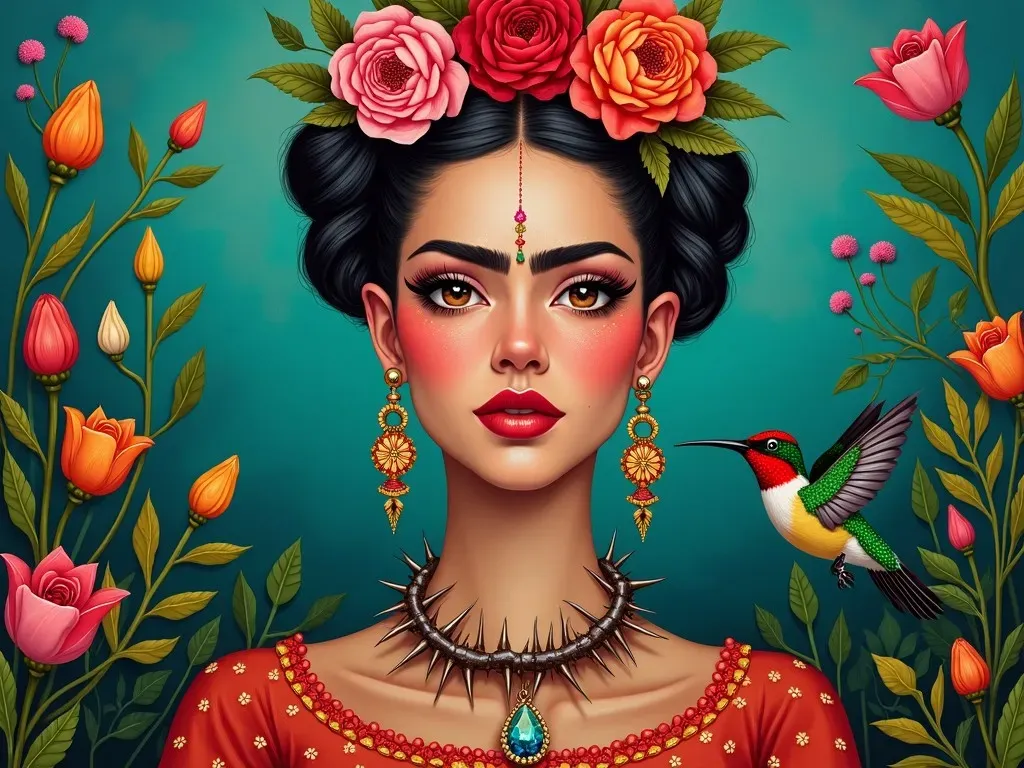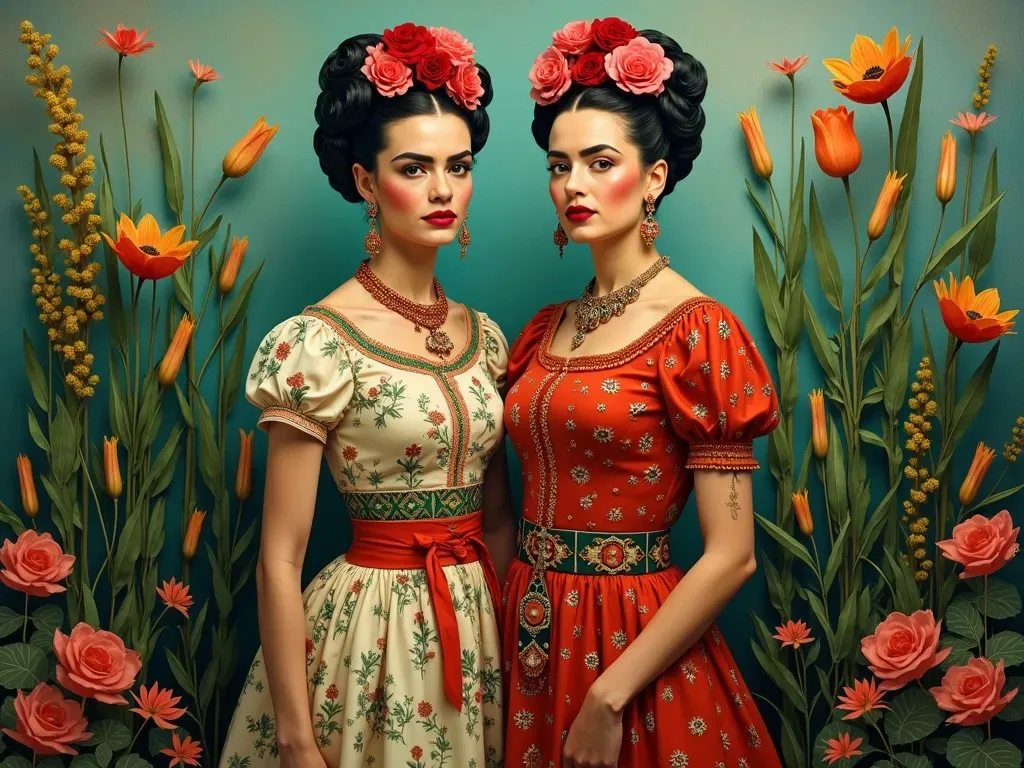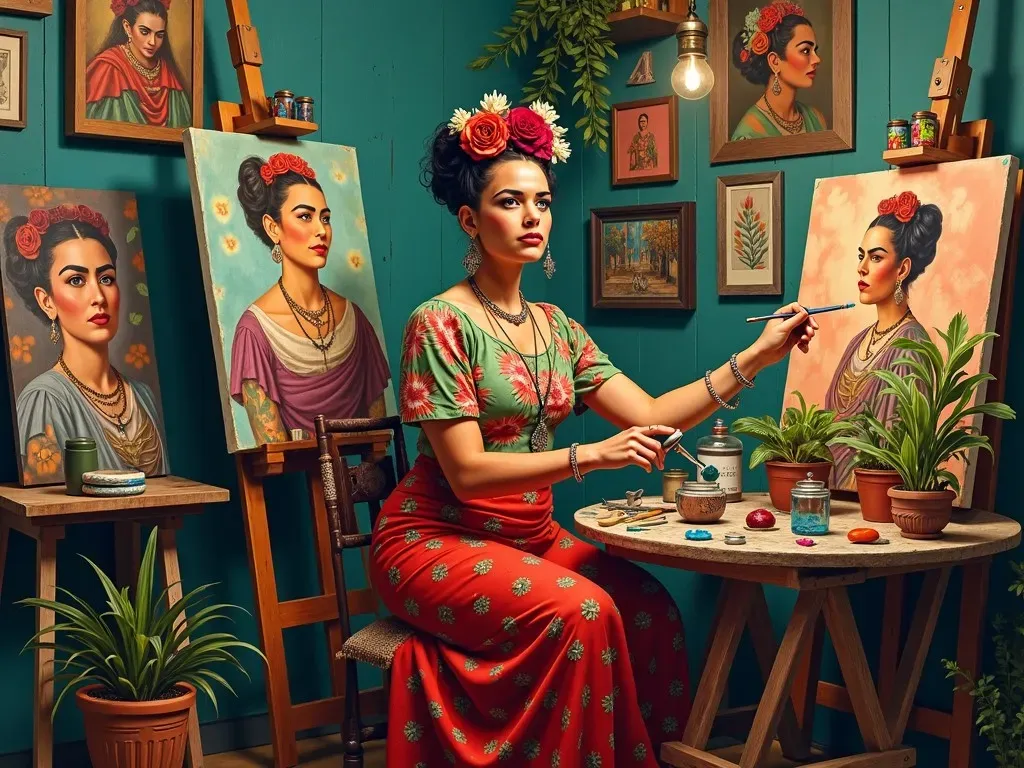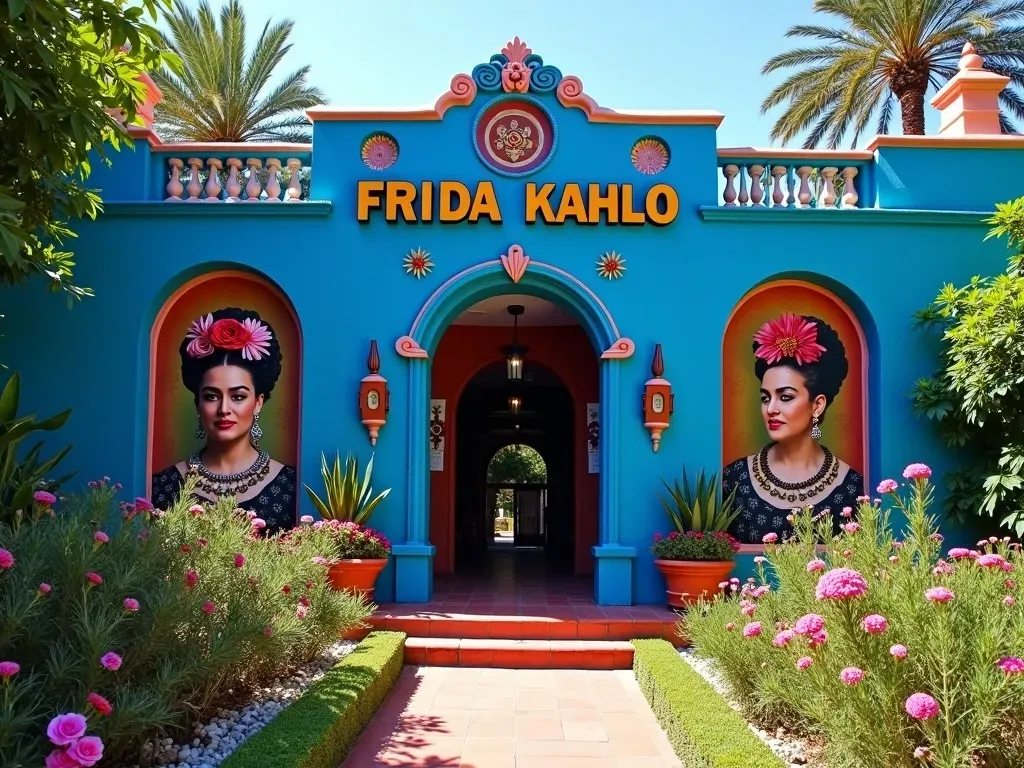Frida Kahlo was a Mexican painter known for her self-portraits that dived deep into themes of identity, physical pain, and the complexities of life and death. Born on July 6, 1907, in Coyoacán, Mexico, Kahlo’s work has had a lasting impact on both the art world and popular culture. Her art is characterized by vibrant colors, symbolic imagery, and an exploration of personal and cultural identity.
Kahlo’s unique style can be recognized through her use of oils, where she masterfully blended elements of folk art, surrealism, and symbolism, creating a narrative that was deeply personal yet universally relatable. This article delves into the types of art that Frida Kahlo created, highlighting her Techniques, themes, and the meaning behind some of her most famous works.
Early Influences and Style
Kahlo’s early life played a significant role in shaping her artistic vision. She was exposed to Mexican culture, politics, and the indigenous way of life. This background became evident in her use of vibrant colors, folk art motifs, and themes reflecting her identity and heritage.
Kahlo often engaged with concepts of postcolonialism and feminism, challenging societal norms through her art. Here’s a breakdown of her art style:
| Element | Description |
|---|---|
| Medium | Primarily oil paintings, including many self-portraits |
| Themes | Identity, pain, death, nature, and cultural heritage |
| Style | Naïve folk art blending with surrealism and symbolism |
| Color Palette | Bright colors, often representing emotions and moods |
Self-Portraits: The Heart of Kahlo’s Art
Self-portraits are a central aspect of Kahlo’s work. Through her depictions, she explored her identity, emotions, and experiences. Out of her 200 artworks, about 55 are self-portraits, making up a significant portion of her life’s work. Kahlo used her body as a canvas to project her internal struggles and physical pain.
Notable Self-Portraits:
- Self-Portrait with Thorn Necklace and Hummingbird (1940): This painting features Kahlo adorned with a thorn necklace and surrounded by symbolic imagery such as a black cat and a hummingbird. The thorn necklace reflects her emotional suffering, while the hummingbird can symbolize hope or freedom.
- The Two Fridas (1939): Created shortly after her divorce from Diego Rivera, this painting shows two versions of Kahlo sitting side by side, symbolizing her dual identity and emotional turmoil during this tumultuous period.


Themes of Pain and Suffering
Kahlo’s art often reflects her lifelong struggles with pain, both emotional and physical. After enduring a severe bus accident at the age of 18 that resulted in multiple medical issues and surgeries, Kahlo became adept at expressing her suffering through her artwork.
Her paintings often include symbolism that represents her pain, such as surgical tools, broken hearts, and references to her fertility struggles.
Examples of Painful Imagery:
- The Broken Column (1944): In this self-portrait, Kahlo’s spine is depicted as a broken column, representing her physical pain. The piece serves as a powerful statement on her medical struggles.
- Henry Ford Hospital (1932): This work showcases her emotional and physical pain following a miscarriage, effectively using symbolism to depict her grief.
| Artwork | Year | Description |
|---|---|---|
| Self-Portrait with Thorn Necklace | 1940 | An exploration of emotional suffering and dual identity |
| The Broken Column | 1944 | A poignant representation of physical pain |
| Henry Ford Hospital | 1932 | Symbolizes loss and grief following a miscarriage |
Symbolism in Kahlo’s Art
Kahlo’s paintings are rich in symbolism, providing layers of meaning that invite deeper interpretation. She often incorporated elements from Mexican culture, traditions, and her own life experiences, making her artworks resonate on multiple levels.
Common Symbols in Kahlo’s Work:
- Animals: Cats and monkeys often appear in her works representing companionship, while birds symbolize freedom or the soul.
- Nature: Full of lush flora and fauna, nature serves as a backdrop in many paintings, symbolizing life and growth but also fragility.
- Traditional Mexican Elements: The incorporation of pre-Columbian art and popular Mexican culture serves to celebrate her roots while making political commentary.
Kahlo’s Artistic Techniques
Kahlo’s techniques are as remarkable as her subject matter. She primarily used oil paints, typically on canvas, which allowed her to create detailed and textured works. Her painting process often involved layering colors, enabling her to create depth and emotional resonance in her pieces.
Here are some notable techniques used by Frida Kahlo:
- Rich Color Palette: Kahlo’s vibrant colors evoke emotional responses and express her internal world.
- Narrative Elements: Her paintings tell stories filled with symbolism, connecting her personal experiences with universal themes.
- Integration of Textiles: Kahlo often incorporated patterns and textiles resembling those from traditional Mexican clothing, linking her work to cultural identity.
Frida Kahlo’s Legacy in Modern Art
Kahlo’s influence extends beyond her lifetime, inspiring generations of artists and feminists alike. Her unapologetic representations of identity and bodily autonomy continue to resonate with modern viewers. The feminist movement has embraced her as a symbol of empowerment, celebrating her openness about her bodily experiences and emotional life.
Her works are widely celebrated in museums worldwide, including the Museo Frida Kahlo in Mexico City, where visitors can engage with her life and art firsthand.
Influential Modern Works Inspired by Kahlo:
- Contemporary artists like Yoko Ono and Marina Abramović have drawn Inspiration from Kahlo’s exploration of pain and identity in their own artistic practices.
- Makeup brands and fashion designers often reference her iconic style characterized by floral headdresses and traditional Mexican attire.
Frequently Asked Questions
What is the significance of Frida Kahlo’s self-portraits?
Frida Kahlo’s self-portraits are significant as they provide insight into her personal struggles, identity, and emotional state. They allow her to express physical and emotional pain while exploring themes of gender and identity.
How did Frida Kahlo’s physical pain affect her art?
Kahlo’s physical pain deeply influenced her artistry, making her explore themes of suffering and resilience. Much of her work reflects her experiences with pain, surgeries, and emotional turmoil, usually represented through vivid imagery and symbolism.
Is Frida Kahlo considered a surrealist?
While often associated with surrealism, Kahlo denied being part of the movement, claiming that she painted her reality rather than dreams. Nonetheless, her work shares analogous elements with surrealism through its dream-like qualities and symbolic imagery.
Where can I view Frida Kahlo’s art?
Frida Kahlo’s art can be viewed in various museums globally. Notably, the Museo Frida Kahlo in Mexico City showcases many of her works and personal memorabilia. For further details, you can refer to Frida Kahlo’s official website.


Frida Kahlo remains an icon of personal expression and cultural identity, with a body of work that continues to inspire and provoke discussions on identity, pain, and resilience. Her art transcends mere aesthetics, delving into life’s complexities and the human condition.
